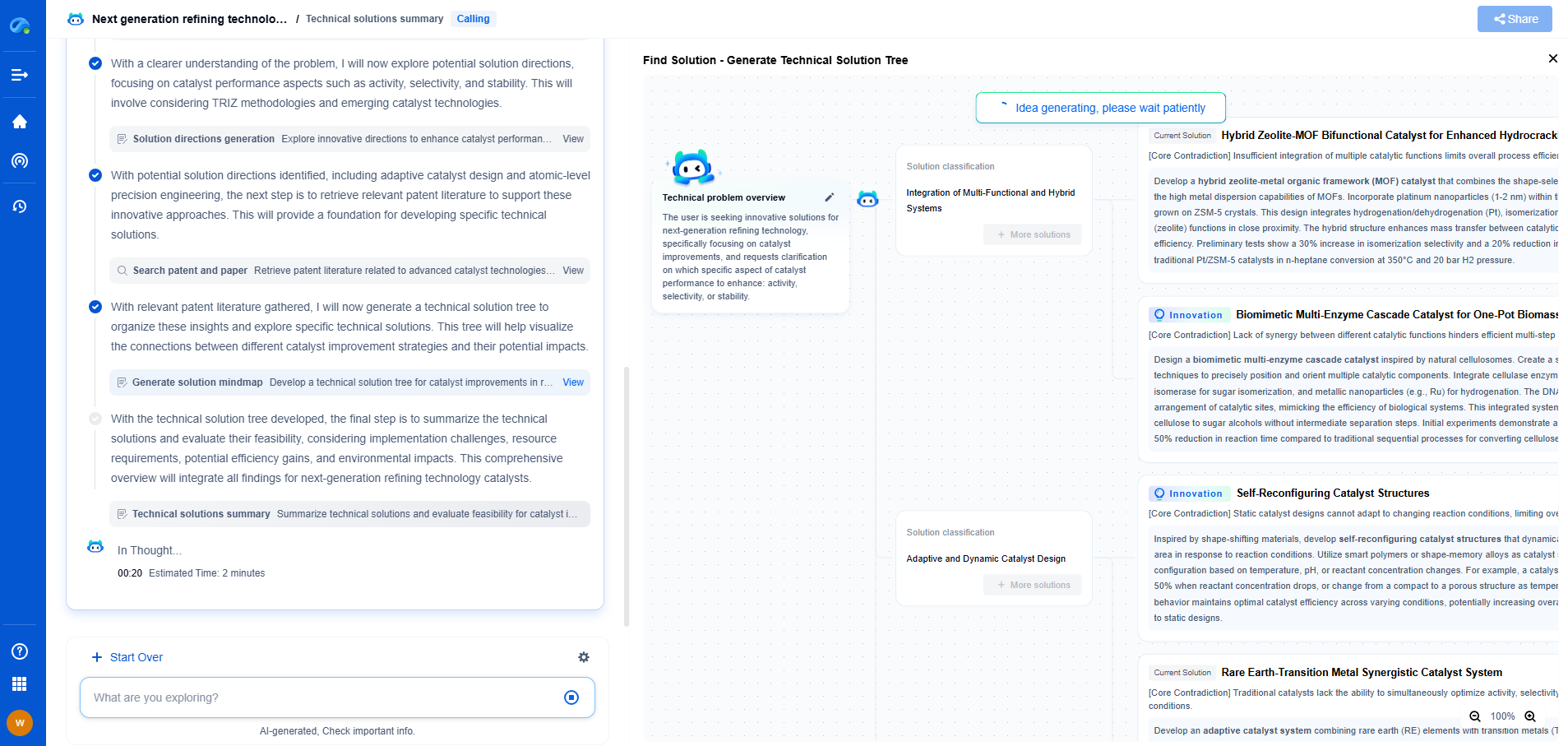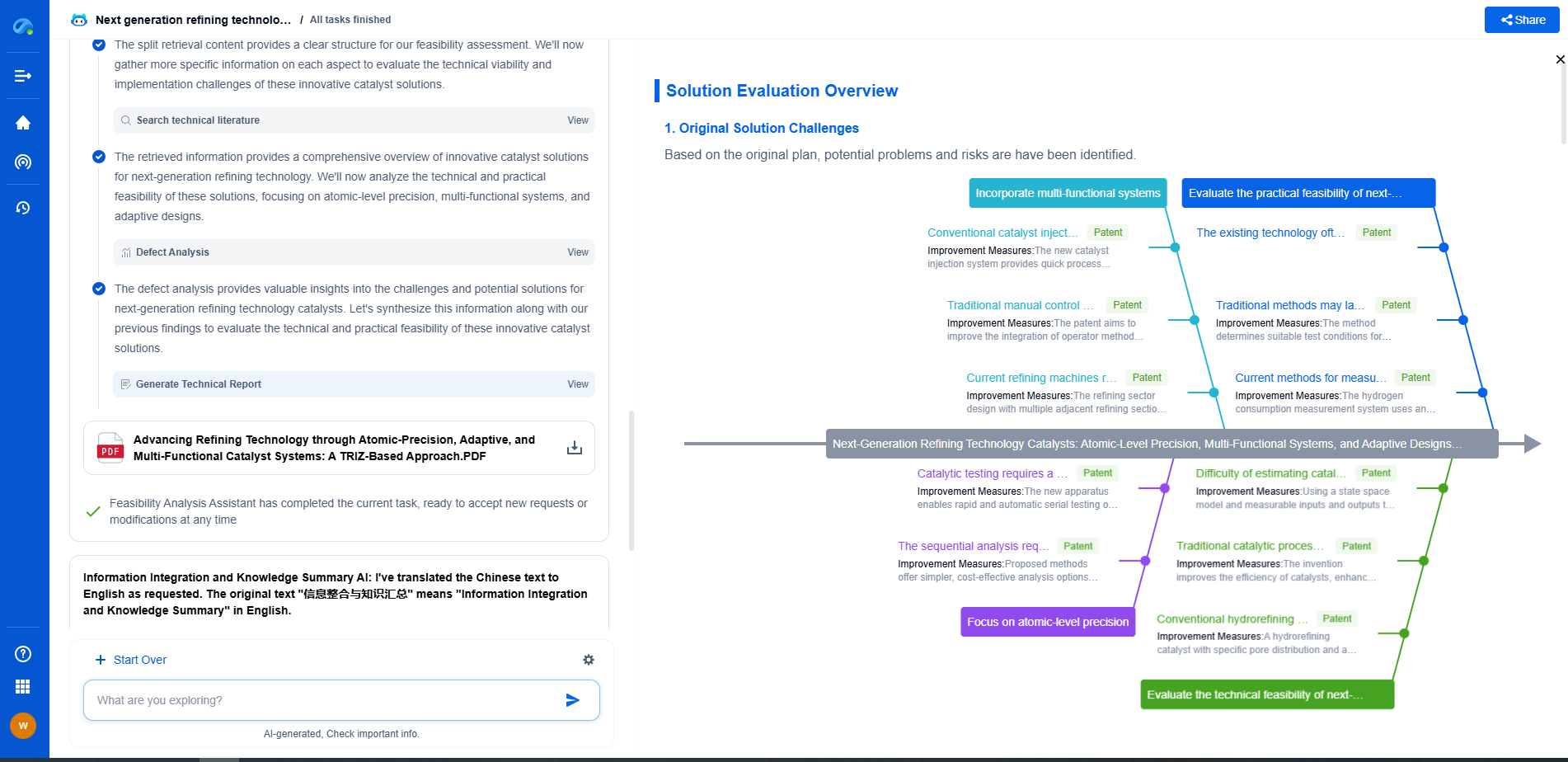What is an HMI? Human-Machine Interfaces for Industrial Control Panels
JUL 2, 2025 |
Human-Machine Interfaces (HMIs) are integral to the modern industrial landscape, serving as the crucial junction where humans interact with machines. As industrial processes become more complex and automated, the need for efficient and user-friendly interfaces becomes paramount. HMIs have evolved significantly over the years, transforming from simple push-button panels to sophisticated touchscreen systems capable of managing intricate operations.
The Role of HMIs in Industrial Settings
In industrial settings, HMIs are pivotal for monitoring and controlling machinery and processes. They provide operators with real-time data and control over various industrial systems, from manufacturing lines to large-scale processing plants. The ability to visually display data and system statuses through graphical interfaces enables operators to make informed decisions quickly, ensuring safety and efficiency.
Key Features of Modern HMIs
Modern HMIs are characterized by several key features that enhance their functionality and user experience. These include:
1. **Intuitive User Interfaces**: With graphical displays and touchscreen technology, modern HMIs offer user-friendly interfaces that simplify interactions. They often include icons, diagrams, and color-coded indicators to represent complex data and processes clearly.
2. **Remote Accessibility**: Many HMIs now feature remote access capabilities, allowing operators to monitor and control processes from a distance. This is particularly useful for large-scale operations or when immediate on-site presence is impractical.
3. **Data Logging and Analysis**: Advanced HMIs can log and analyze historical data, providing valuable insights into operational trends and performance. This capability aids in predictive maintenance, reducing downtime, and improving overall efficiency.
4. **Customization and Scalability**: HMIs can be customized to fit specific operational needs, offering scalability as industrial processes evolve. This flexibility ensures that the interface remains relevant and effective as business requirements change.
Applications of HMIs in Industry
HMIs are utilized across a wide range of industries, each benefiting from the technology in unique ways. In manufacturing, HMIs are used to oversee production lines, ensuring products are created efficiently and meet quality standards. In energy sectors, they manage complex systems like power grids and refineries, optimizing performance and ensuring safety. The pharmaceutical industry relies on HMIs for maintaining precise control over production environments, where even minor deviations can have significant consequences.
Challenges and Considerations
Despite their many advantages, implementing and maintaining HMIs comes with challenges. Ensuring cybersecurity is paramount, as these interfaces are often connected to larger networks, making them potential targets for cyberattacks. Additionally, user training is crucial to maximize the benefits of HMIs, as operators need to understand how to interact with the system effectively.
The Future of HMIs
As technology continues to advance, the future of HMIs looks promising. Emerging trends include the integration of artificial intelligence and machine learning, which will enhance predictive capabilities and decision-making processes. Furthermore, the growing interest in virtual and augmented reality could lead to innovative HMI solutions that provide even more immersive and intuitive user experiences.
In conclusion, Human-Machine Interfaces are indispensable in modern industrial settings, bridging the gap between human operators and complex machinery. Their evolution reflects the ongoing technological advancements in the industrial sector, promising even greater efficiency and control in the years to come.
Ready to Reinvent How You Work on Control Systems?
Designing, analyzing, and optimizing control systems involves complex decision-making, from selecting the right sensor configurations to ensuring robust fault tolerance and interoperability. If you’re spending countless hours digging through documentation, standards, patents, or simulation results — it's time for a smarter way to work.
Patsnap Eureka is your intelligent AI Agent, purpose-built for R&D and IP professionals in high-tech industries. Whether you're developing next-gen motion controllers, debugging signal integrity issues, or navigating complex regulatory and patent landscapes in industrial automation, Eureka helps you cut through technical noise and surface the insights that matter—faster.
👉 Experience Patsnap Eureka today — Power up your Control Systems innovation with AI intelligence built for engineers and IP minds.
- R&D
- Intellectual Property
- Life Sciences
- Materials
- Tech Scout
- Unparalleled Data Quality
- Higher Quality Content
- 60% Fewer Hallucinations
Browse by: Latest US Patents, China's latest patents, Technical Efficacy Thesaurus, Application Domain, Technology Topic, Popular Technical Reports.
© 2025 PatSnap. All rights reserved.Legal|Privacy policy|Modern Slavery Act Transparency Statement|Sitemap|About US| Contact US: help@patsnap.com

